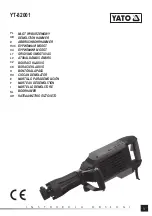
Digital Energy™
g
OPM_LPS_3UI_10K_20K_0US_V010.doc
16/38
Installation Guide
LP 33
/ 10 - 20 kVA
3.5
VENTILATION AND COOLING
The heat produced by the UPS is transferred to the environment by its internal blowers.
Airflow through the UPS
It is important that the cooling air can freely
flow through the air inlets and outlets of the
UPS.
Fig. 3.5-1 Airflow through the
LP 33
NOTE !
Insufficient distances on both sides of
the UPS could increase the temperature
inside the UPS.
Do not put any object on the top of the
cabinet: it might obstruct the air flow.
Heat evacuation from UPS room
The heat must be evacuated from the
environment with a proper cooling / ventilation
system provided by the user.
Fig. 3.5-2 Heat evacuation from UPS room
Air volume and losses of the UPS
The below table indicates the heat dissipation at full load at
PF = 0.8
lag. and charged battery, up
to
3,280 ft
(1,000 m) altitude, for cooling air
77°F
(25°C) to
86°F
(30°C).
Losses
Cooling air flow
UPS model
BTU / hr
kW
CFM
m
3
/ h
LP 33 / 10 kVA
3,038
0.89 91 154
LP 33 / 20 kVA
6,075 1.78 182 308
















































